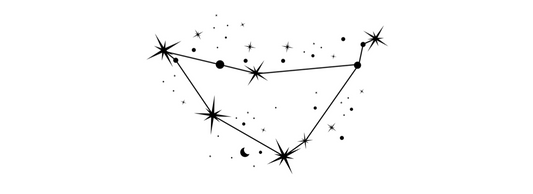Elul, which falls in August or September, is a month that holds deep spiritual significance and serves as a prelude to the High Holy Days of Rosh Hashanah and Yom Kippur.
Here’s what you should know about Elul
Hashem's Name:
The sequence of the four letters in Hashem's 'name' for Elul is Hei-Hei-Vav-Yud. There is a concept where a 'lower' entity receives from a 'higher' entity. In Hashem's name, two letters are considered receptive (Hei and Hei), while two are seen as giving (Vav and Yud). The sequence of letters in Elul symbolizes a flow from bottom to top: starting with the lower recipient (the lower Hei), then the upper recipient (the upper Hei), followed by the lower giver (the Vav), and finally the higher giver (the Yud). During Elul, individuals practice Teshuvah. This process involves aligning with the higher Mashpia and reflecting on the past year. By returning everything to its source, one can start the new year with clarity and compassion. The lower Hei of Hashem's name represents actions, while the upper Hei represents mindset. The process of 'returning the Hei' involves fixing actions first. However, changing mindset is crucial to sustain positive actions long-term. How can we cultivate a new 'second nature' to instinctively act positively? Shifting mindset involves actions beyond thoughts, outsmarting the ego, and forming new positive habits through consistent small actions to reprogram the subconscious mind.
Torah Verse:
The permutation of the Divine Name comes from the last letters of the verse, “..וּצְדָקָ֖ה תִּֽהְיֶה־לָּ֑נוּ כִּֽי” The pasuk continues, “נִשְׁמֹ֨ר לַעֲשׂ֜וֹת אֶת־כׇּל־הַמִּצְוָ֣ה הַזֹּ֗את לִפְנֵ֛י ה אֱלקינוּ כַּאֲשֶׁ֥ר צִוָּֽנוּ...” " if we are careful to perform this entire commandment before Hashem, as He has commanded us." This is a section of the Torah's suggested response for when our wise child inquires about the essence of the Torah's teachings. When the wise one within us seeks to understand the Torah's guidance, it leads to clarity on the merits of following it, encouraging repentance for increased blessings in life.
Letter of the month:
In the month of Elul, the letter associated is Yud. The visual depiction of Yud is a tiny, raised point, symbolizing the essence of goodness and spiritual elevation within each individual. Yud embodies the eternal purity of the soul that remains untarnished, even amidst the chaos of our external circumstances. The Zohar considers Yud as the point of origin from which all written letters emerge. Yud is the starting point of the letter Aleph, which consists of a Yud below, a slanted Vav in the middle, and a Yud above. Graphically, the Yud is the starting point for every letter in the Aleph-Beis, with each letter originating from a Yud-like point at the top. The Yud is considered the primary element of all letters, as touching the pen to paper to form a letter creates a Yud. The Yud represents the focal point from which manifestation expands, akin to a tiny dot of ink symbolizing the pure potential that is conveyed and articulated in every letter of creation. This small point also alludes to the Nekudah Tovah within every one of us.
Elul:
The Akkadian name for this month was Ululu, translating to 'ululate or shout for joy'. These interpretations, reflecting a sense of joy, appear to differ from the beliefs of our Sages, who propose that Elul is associated with an Aramaic term signifying 'to carefully search.' During Elul, we are encouraged to cleanse our inner selves and explore our inner world with joy, almost like a joyful celebration. Afterward, we should acknowledge our past, understand its impact on the future, embrace its insights, and bid it farewell with gratitude. The numerical value of the word Elul is 13 in Mispar Katan. During Elul, the Thirteen Attributes of Divine Mercy gradually reveal themselves, reaching a peak with the final prayer on Yom Kippur. The gematria of Elul is 67, which corresponds to the word "Binah." Binah represents the essence of the higher Hei in Hashem's name. This concept also hints at a deeper form of Teshuvah and the evolution of our consciousness, our perception of life. When we add in '1' to the word itself, the total value of Elul becomes 68, equating to the word "Chayim." This signifies that Teshuvah, the main spiritual focus during Elul, breathes life into us and inspires hope for a brighter tomorrow.
Sense of the month:
The month of Elul emphasizes action and making, linked to the concept of Teshuvah and life improvement. Moshe's action of carving the second Tablets after the Chet HaEgel illustrates this idea. Asiyah in Elul involves repeated positive actions shaping our inner reality, akin to how Moshe engraved the Commandments. Many people feel unhappy and seek drastic changes to improve their lives. Dreaming big is not a bad thing, but to break negative behavior patterns, it's not enough to just know they exist. Declaring intentions without addressing practicalities often leads to a temporary change followed by a return to old habits. Changing ingrained habits requires more than grand declarations; it involves addressing specific behaviors and underlying habits. To rewire the brain and establish new habits, resolutions need to be converted into specific, practical, repetitive actions.
Sign of the month:
The constellation of Elul is Virgo. Within each individual, Elul represents a state of virginal purity, embodying the deeper essence of the soul that remains untainted by any actions or inactions. This reflects the inner Yud and is always present with us. This essence is both the origin and the goal of Teshuvah. Rather than merely meaning repentance, Teshuvah stems from the word "return," suggesting that it is a journey back to the root of your soul and the core of your true self. Individuals born under the Virgo sign are often introspective, disciplined, and emotionally reserved. Virgos are keen observers and can maintain emotional detachment. With an innate desire to serve and assist others, they frequently pursue careers as doctors, social workers, and bankers.
Tribe Of The Month:
Gad is the tribe linked to the month of Elul. Overall, the term Gad translates to 'camp.' Gad's unique ability was to rally a company of warriors. Additionally, Gad signifies 'good Mazal' or good fortune. In the month of Elul, we reflect on our entire past year, embracing our mistakes and missteps. This process allows us to uncover deeper wisdom and return to our fundamental purity. By engaging in this practice, we are broadening the boundaries of Kedusha in our lives. This elevated form of Teshuvah converts past intentional sins and chaos into merits through Tikkun. To achieve this, strength is essential. The tribe of Gad, for instance, comprised formidable warriors who led the charge into battle. To embody righteousness and holiness, one must be a spiritual warrior, championing personal beliefs and the life you aspire to live. It's crucial not to surrender or become complacent when faced with challenges. If you stumble, rise immediately and keep pushing ahead. The principles of expansion and continuous growth, which are fundamental to the Torah, call for steadfast perseverance.
Body Part:
The body part linked to Elul is the left hand. As most individuals are right-handed, the left hand serves as a universal symbol of our weaker side and the subconscious mind. Nevertheless, a right-handed person can enhance their left hand through consistent practice and articulation. Similarly, we can reprogram our unconscious mind with Teshuvah via deliberate actions. The spiritual impact of repeated actions can transform the habitual workings of the subconscious mind, empowering us to act with greater sensitivity and compassion.
Holiday of the month:
The element associated with the month of Elul is Earth. Characterized as cold and dry, Earth symbolizes a spiritual chill and aridity, reflected in the absence of Torah-based or rabbinic holidays during this time. Elul is a month dedicated to intensive personal effort. While Elul lacks any official holidays, each day presents a unique opportunity to connect with the Divine. With the King in the field, He is more accessible to everyone; we simply need to approach Him with our requests. The earthy nature of this month encourages us to become more grounded, inviting us to recognize our inherent closeness to Hashem in our daily lives, as if we are present in the field.
Gemstone:
Gad’s stone was an Amethyst, known as אַחְלָמָה. It fortifies the heart and instills bravery, which is why it is referred to as achlama, a term associated with recovery and strength. This substance alleviates fears while enhancing a sense of courage, intuition, and creativity. Additionally, it may assist those who struggle with sleep and reduce the occurrence of nightmares. Amethyst was chosen for Shevet Gad to instill courage and bravery when going to war.




